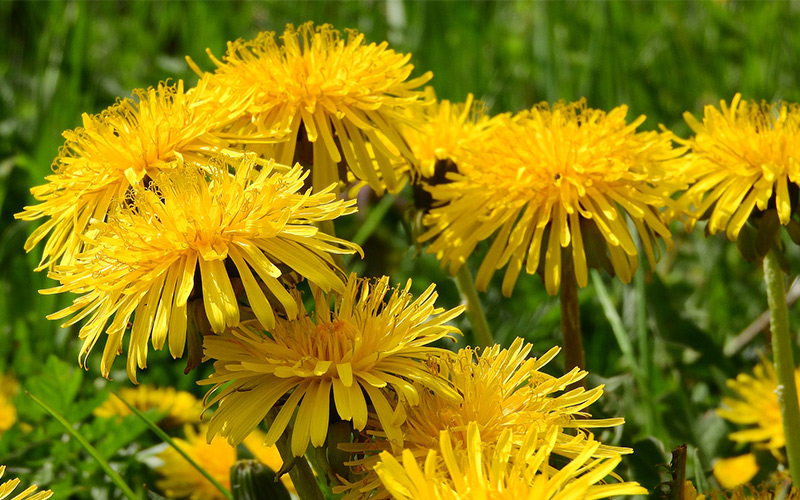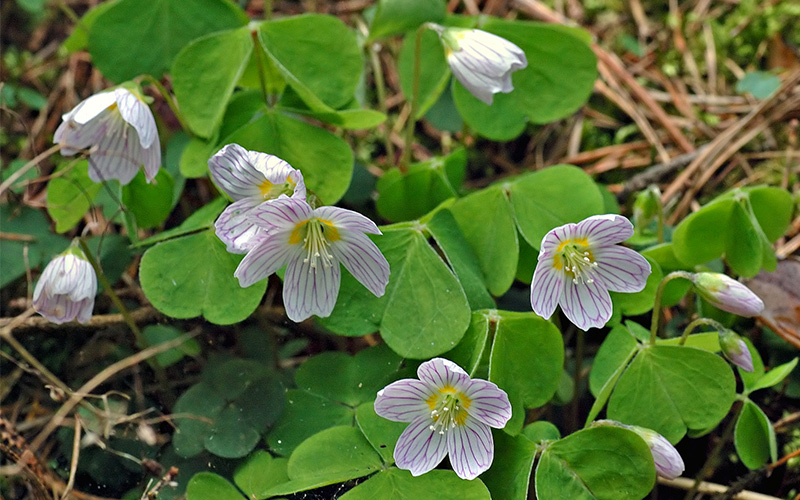By Allie Wisniewski, American Forests
Some of the most common plants growing around you are frequently dismissed as weeds, but many of them actually have medicinal uses you might find helpful! Read below to discover the hidden uses of these intriguing and underlooked parts of our ecosystem.
Dandelion

Chances are that you spent at least a small portion of your childhood making wishes with these iconic dandelion tufts. But did you know that they’re edible, and, even better, a superfood? There’s a reason I spotted dandelion greens at a salad bar not too long ago. While that should certainly add to their credibility, it’s rather unnecessary to spend $8.99 a pound for what most of the population considers a weed, especially when nature offers an essentially unlimited supply at no cost at all. Every part of the dandelion plant is edible, and offers an incredible variety of health benefits when consumed. Dandelion juice is known as a detoxifier, diuretic and antioxidant, and helps reduce cancer-causing free radicals in the body. Dandelion also helps to promote liver health and digestion, remedy anemia and reduce blood pressure.
Stinging Nettle

While its name might allude to something you might generally avoid ingesting, stinging nettle is rich in vitamins and has been used for centuries to treat eczema, arthritis, gout and anemia. The leaves, stems and roots are all edible, though younger leaves are usually preferable in terms of taste, texture and nutrition. Remember not to eat them raw, however — the plant is called stinging nettle for a reason. For best results, add leaves to soups and stews (they make a great spinach substitute), or dry them and infuse with hot water to make tea.
Chickweed

Chickweed is both hardy and delicate. One of the most common weeds found in suburban lawns around the country, it can also be found in deciduous forests, fields and pastures. Its flowers resemble tiny white stars, and while they are edible when cooked, the leaves contain a much higher concentration of nutrients. Unlike stinging nettle, chickweed greens can be enjoyed raw and are used to treat asthma and other lung diseases, obesity, vitamin C deficiency (scurvy), psoriasis and even rabies. It can also be applied topically to heal boils, rashes and ulcers.
Broadleaf Plantain

I grew up seeing this plant cover every inch of my favorite parks and greenspaces, but of course knew nothing of its medicinal powers at the time. It’s no wonder that I saw it everywhere — turns out these plantains are invasive. That being the case, I generally advise against planting this species in your own garden, and instead recommend venturing into a field or local park where they’re likely already sprawling in abundance. Make sure, however, that the area isn’t chemically treated. Plantain leaves are most commonly harvested for medicinal use, known to have antimicrobial, astringent and anti-inflammatory properties. They’re particularly rich in calcium and vitamin K, and are used topically to treat burns, cuts, sunburn, sores and boils. Internally, plantain helps improve liver and kidney function and can help to ease throat infections and common cold symptoms.
Wood Sorrel

I remember a friend of mine once offering me a clover-shaped leaf, assuring me it was fine to eat and even tasted good — subtly tart like the skin of a green apple. Although I was hesitant, I tried it, and she was surprisingly right. Wood sorrel is a frequent visitor to my own backyard, and many others around the country. Its leaves, flowers and bulbs are all edible and medicinal. Considered a diuretic, it has a multitude of healing properties, used to relieve hemorrhages, cleanse blood, produce an appetite, and remedy ulcers in the mouth. Its juice is also known to reduce swelling and inflammation. What’s not to love? Add wood sorrel to your next salad for a healthy kick.